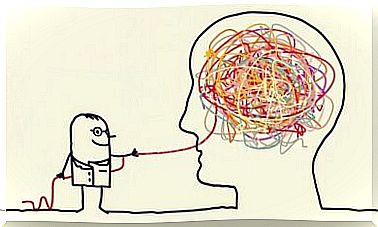The Bad Apple Theory In The Workplace

The bad apple theory tells us that in every organization there is a worker whose attitude or personality can “contaminate” the rest through his behavior. These people not only cause discomfort and misfortune in the work environment, but also represent a great economic burden on the companies themselves, partly due to their frequent medical leaves.
These words were spoken by Steve Jobs, referring to John Sculley. He even had to leave the company he co-founded because of this man. This famous case is certainly not the only one. A study by the Glassdoor group shows that 95% of companies claim to have hired at least one bad apple every year.
How is that possible? How much influence can a single person have to change the foundations of an entire organization and create such a negative impact? Many experts say it’s a kind of domino effect.
Some people are so damaging that they can destroy the morale of an entire team. In many cases, the impact doesn’t just affect their employees. The customers also have to deal with this at some point, due to their incompetence or toxic personality.

The Bad Apple Theory or How One Person Destabilizes an Entire Organization
Although the bad apple theory has been known for years, we still don’t know what to do to prevent this phenomenon. The University of Washington conducted an interesting study in 2007 led by Dr. William Felps to demonstrate and explain the causes of this theory.
For example, they were able to demonstrate that the negative behavior of a single employee can have a major impact on the entire organization. Not only that, work problems are often not limited to the workplace. They can also affect on a personal and family level. Work conflicts don’t stay at work, but we take them home with us.
Here’s how these “rotten apples” infect other people:
- They avoid their own work responsibilities.
- Bad apples are pessimistic, defeatist and extremely critical of everything and everyone.
- They act like real villains. They resort to aggression, intimidation, ridicule and criticism.
- Bad apples are also unfair. They use illegal methods, write false reports and use deception and blackmail.

Why don’t companies have filters to identify bad apples?
One thing the bad apple theory shows us is that companies generally hire people quickly, but don’t fire people until late. What does that mean? In many organizations, the need to fill a job can cause a rapid and ineffective selection process. Sometimes that immediacy does not take into account principles and other important factors.
In addition, the tests to assess a candidate do not allow employers to identify hidden personality factors or possible future behavior in the workplace.
Because of this, employers often get carried away with a candidate’s list of skills and his or her comprehensive resume. They focus on their excellent education and experience, how they come across and their assertiveness.
However, they often don’t spend time identifying other skills, such as:
- their ability to work in a team
- a positive attitude
- interpersonal sensitivity
- self control
- emotional intelligence

What to do when a bad apple escapes the filters of selection processes
We said it at the beginning: on average every company hires at least one bad apple per year. The selection processes fail and they soon begin to feel the consequences. The workplace becomes “contaminated” and colleagues become frustrated, become defensive, have to take time off due to stress and productivity problems arise.
What to do in these cases? Strangely enough, these situations are often not resolved quickly. The bad apple theory tells us that it usually takes a long time for colleagues to intervene, despite the fact that they are the first to feel the consequences of these toxic and negative situations.
As we can assume, it is not always easy to report or expose bad behavior, nor to convince management to intervene.
Today, many organizations still function vertically and not horizontally. This means that there is often not much flexibility, nor direct communication between employees and management. This corporate hierarchy means that bad apples linger longer, contaminating more and more situations and increasing instability.
This is just wrong. Bad apples need to be detected as soon as possible, for the benefit of the entire organization. After they are identified, management should try to improve their teamwork skills.
If this doesn’t work, they should be moved to a less influential position. If all this doesn’t solve the problems, then they should consider firing them. Situations like this call for firm, quick and decisive action, because passivity will only make the situation worse.









